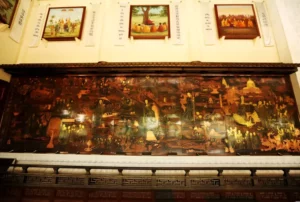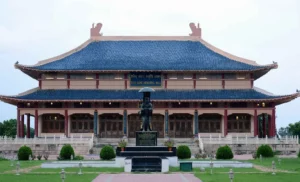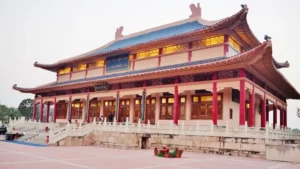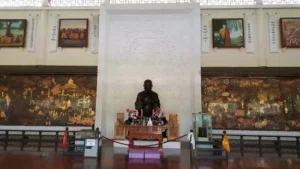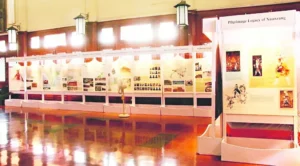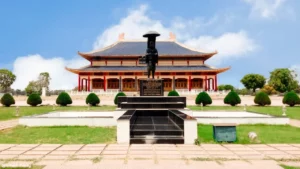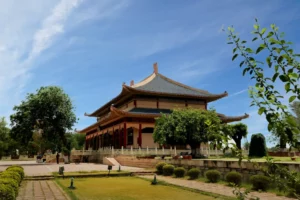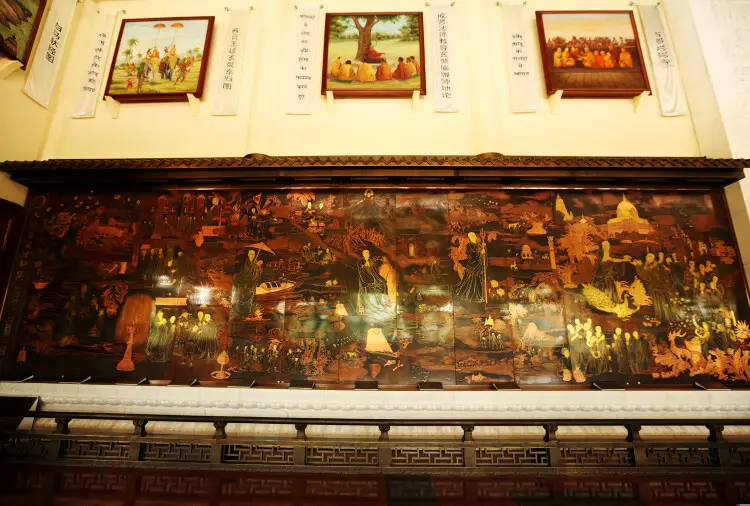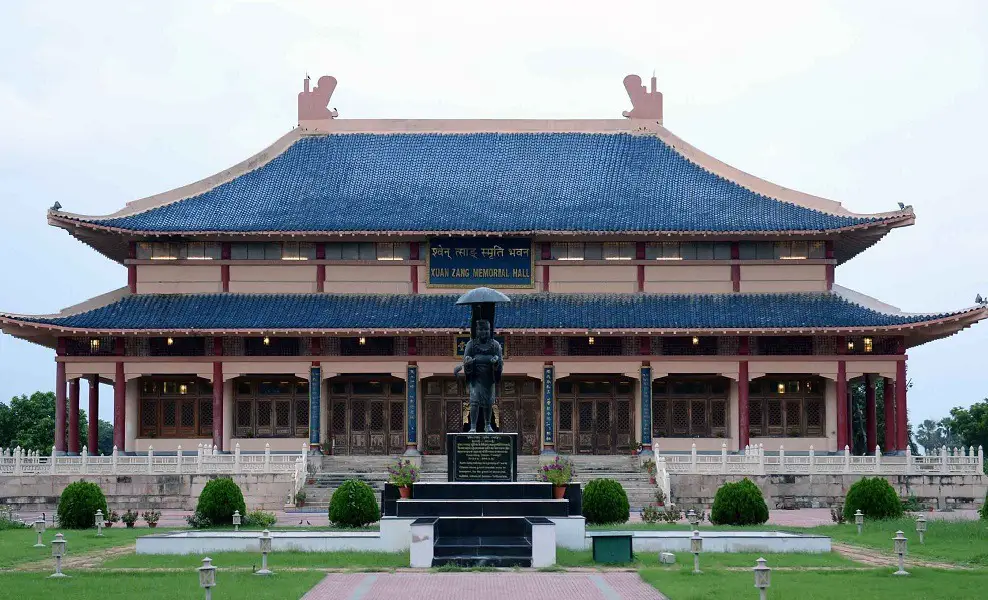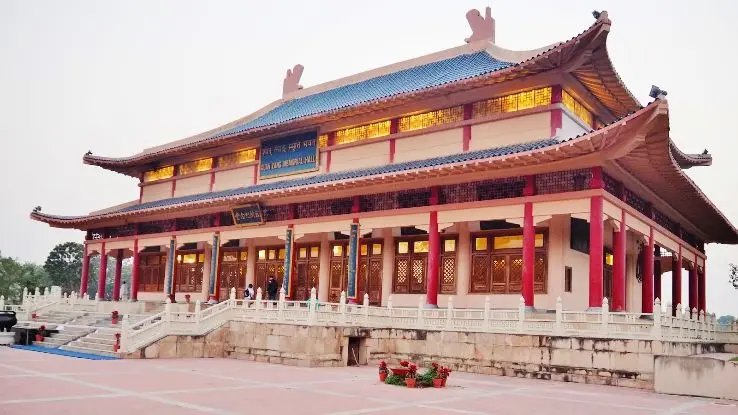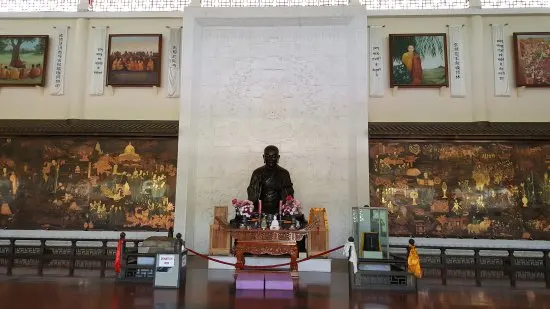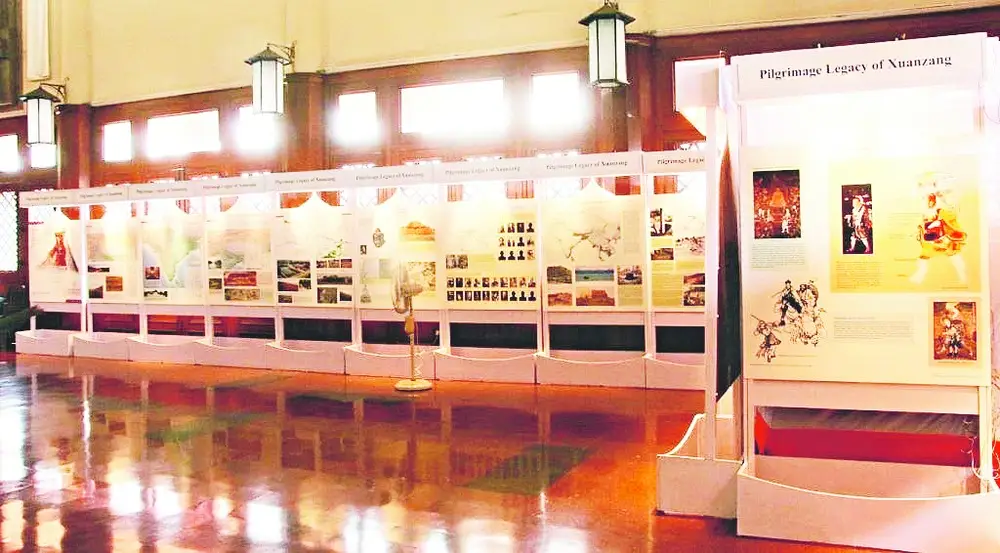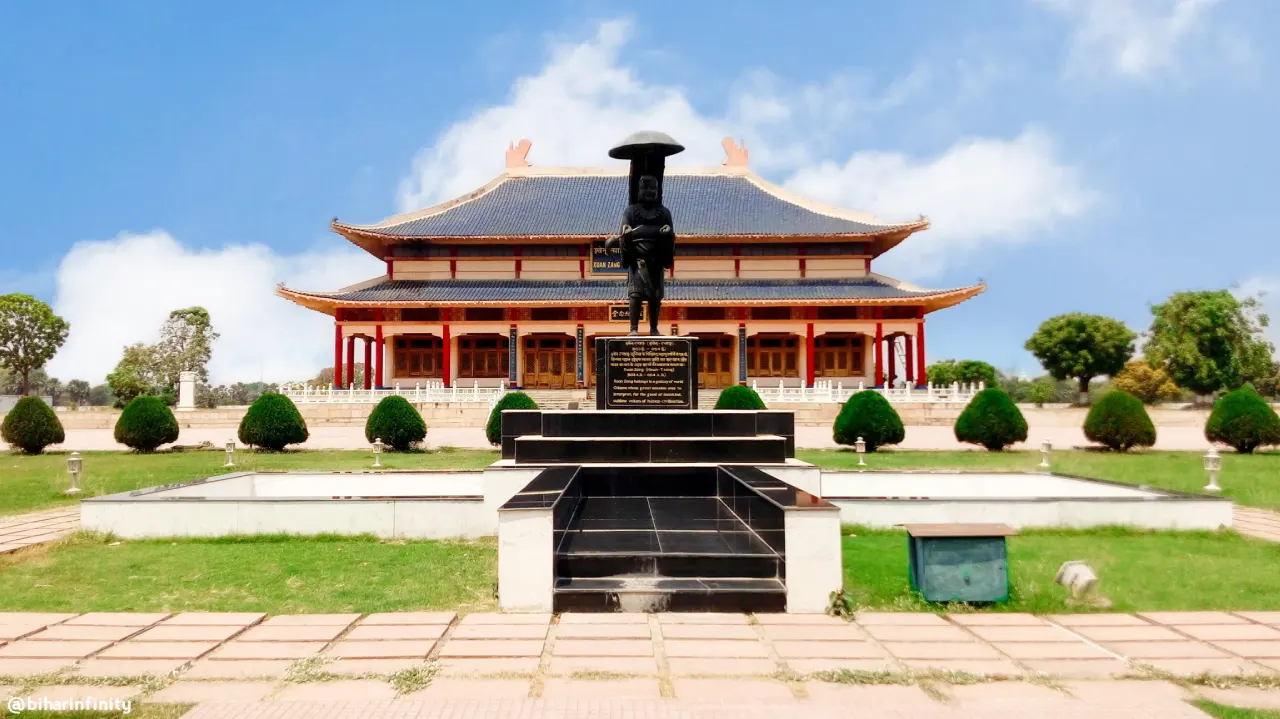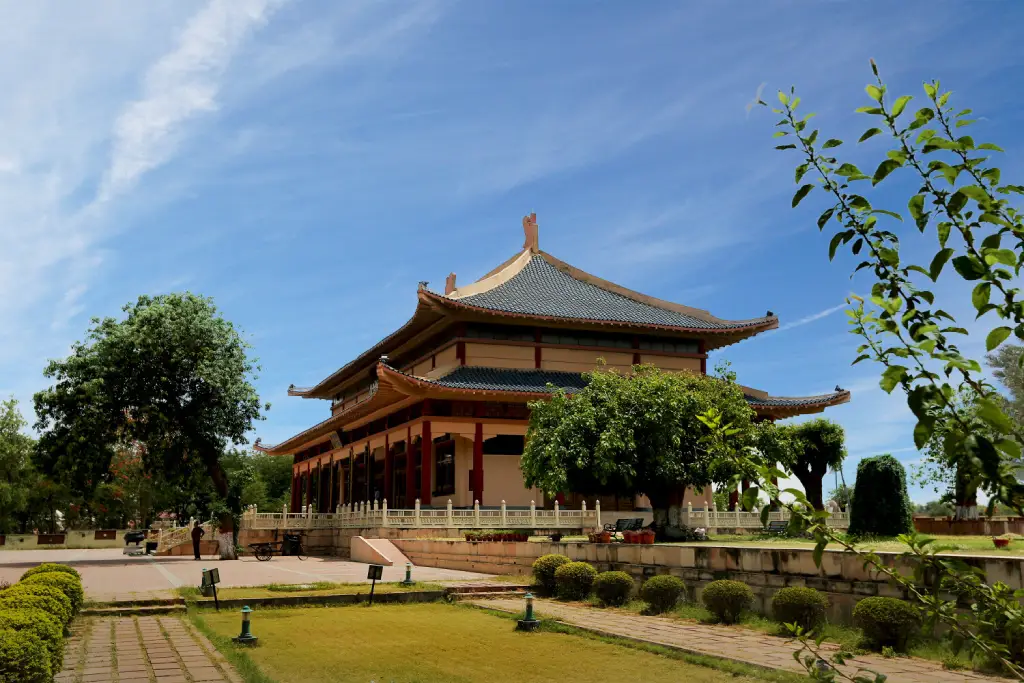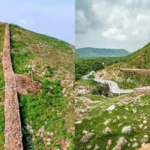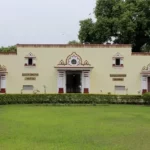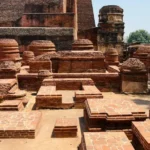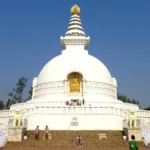Nestled within the serene landscapes of Rajgir, Nalanda, the Hieun Tsang Memorial Hall stands as a captivating testament to the illustrious journey of one of history’s greatest scholars and explorers. In a world where knowledge knows no bounds, this memorial hall pays homage to the remarkable life and contributions of Hieun Tsang, a monk whose travels bridged cultures and civilizations. Journey with us through time as we explore the significance of this hallowed ground, its creation, and the enriching experiences it offers.
Hieun Tsang: A Journey Through Time
Hieun Tsang, a name resonating with wisdom and adventure, lived during the 7th century CE. His tireless quest for knowledge led him on an odyssey across treacherous terrains and into the heartlands of India. As a devout Buddhist monk, Hieun Tsang sought to deepen his understanding of Buddhism’s roots while promoting intellectual exchange. His voluminous records and detailed accounts of India’s cultural, religious, and social landscapes provide invaluable insights to historians and enthusiasts alike.
In the annals of history, Hieun Tsang’s connection to Rajgir and Nalanda shines brightly. Rajgir, known as Rajagriha in ancient times, was a prominent seat of power and spirituality. Nalanda, on the other hand, housed one of the world’s first universities, a center of learning that attracted scholars from far and wide. It is this historical backdrop that lends even greater significance to the creation of the Hieun Tsang Memorial Hall.
The Creation of Hieun Tsang Memorial Hall
The memorial hall, a labor of reverence and dedication, was established with the noble aim of preserving and propagating Hieun Tsang’s legacy. Its architectural design seamlessly blends modernity with tradition, paying homage to the intricate artistry of ancient India. Stepping into the hall, visitors are greeted with a symphony of exhibits and artifacts that chronicle Hieun Tsang’s life and travels.
Interactive displays and multimedia presentations further elevate the visitor experience. As you engage with his written accounts and immerse yourself in the virtual landscapes he once traversed, a sense of awe and connection takes root. The memorial hall isn’t just a physical space; it’s a bridge that spans centuries, fostering cultural understanding and historical awareness.
Exploring the Memorial Hall
Venturing deeper, you’ll encounter a treasure trove of relics. From ancient manuscripts and scriptures to intricate sculptures and paintings, each piece whispers stories of a bygone era. The exhibits not only shed light on Hieun Tsang’s scholarly pursuits but also provide a window into the vibrant tapestry of the societies he encountered.
As you stand before a meticulously crafted sculpture or decipher the delicate brushstrokes of a painting, you can’t help but wonder about the lives and minds that shaped them. The memorial hall serves as a living tribute to the shared heritage of humanity, where boundaries blur and histories intertwine.
Surroundings of Rajgir, Nalanda
The environs of Rajgir weave a captivating narrative of history and natural beauty. Rajgir’s serene hills and renowned hot springs offer a haven of spiritual reflection, inviting visitors to connect with its tranquil ambiance. Nearby, Nalanda’s ancient ruins stand as a testament to intellectual prowess, transporting guests to a time of vibrant scholarly exchange. Amidst these historical treasures, the lush landscapes encourage leisurely exploration, creating a harmonious blend of past and present. Additionally, the region boasts attractions like the Vulture’s Peak or Griddhakuta Hill, enhancing the allure for those eager to delve deeper into the rich tapestry of Rajgir’s surroundings.
As you stroll through the ruins of Nalanda’s monastic complex or partake in Rajgir’s tranquil ambiance, you’re enveloped by the whispers of the past. The air seems to reverberate with the footfalls of monks and scholars, igniting your imagination and connecting you to a shared human journey.
How to Reach Hieun Tsang Memorial Hall
Reaching the memorial hall is a journey in itself, with several transportation options to consider. If you’re arriving by air, the nearest airport is Patna Airport, from where you can opt for a taxi or bus to Rajgir. For those traveling by train, the nearest major railway station is Gaya Junction. From there, local transportation options are readily available.
Once you’ve arrived in Rajgir, following directions to the memorial hall is a breeze. Signage and local assistance ensure you’ll reach your destination with ease. To make the most of your visit, consider planning your itinerary ahead of time and allowing ample time to explore both the memorial hall and its surroundings.
Best Time to Visit
When to visit the Hieun Tsang Memorial Hall largely depends on your preferences and the experiences you seek. The region experiences three distinct seasons: summer, monsoon, and winter. Summer, from March to June, can be hot and humid, while the monsoon season, from July to September, brings lush greenery but occasional rain showers. Winter, from October to February, offers pleasant weather, making it an ideal time to explore Rajgir and Nalanda.
Additionally, keep an eye out for special events and festivals that may coincide with your visit. These celebrations infuse the region with a vibrant energy, showcasing traditional music, dance, and cultural practices. As you immerse yourself in the festivities, you’ll gain a deeper appreciation for the living heritage that thrives here.
Immersing in the Legacy
Stepping out of the memorial hall, you’re left with more than just memories. The legacy of Hieun Tsang and his unwavering pursuit of knowledge resonate within you. His journey becomes a metaphor for the human spirit’s boundless quest for understanding, the unyielding curiosity that propels us forward.
As visitors from around the world share their personal experiences, the memorial hall transforms into a meeting ground of cultures and perspectives. Conversations flow freely, bridging gaps and dispelling misconceptions. It’s a testament to the power of history to unite, inspire, and foster a sense of belonging.
Learning and Reflection
Beyond its architectural grandeur and historical significance, the Hieun Tsang Memorial Hall holds immense educational value. Students, scholars, and curious minds find themselves immersed in a treasure trove of knowledge. The exhibits encourage active learning and critical thinking, inviting you to question, analyze, and explore.
For educators, the memorial hall becomes a dynamic classroom where history comes to life. Its impact extends beyond the physical visit, igniting a thirst for knowledge that reverberates in classrooms and conversations. The narratives of Hieun Tsang and his contemporaries serve as catalysts for in-depth research and intercultural dialogue.
Conclusion
In the heart of Rajgir, Nalanda’s legacy lives on through the Hieun Tsang Memorial Hall. This sacred space not only preserves history but invites us to be a part of it. As we stand on the precipice of time, gazing back at the footsteps of a visionary monk, we’re reminded that the pursuit of knowledge knows no bounds. The memorial hall is a testament to the enduring power of curiosity, the unbreakable threads that connect cultures, and the profound impact of individuals who dare to venture beyond the horizon.
Frequently Asked Questions (FAQs)
Yes, the memorial hall is open to visitors year-round. However, it’s advisable to check for any seasonal closures or maintenance schedules before planning your visit.
Absolutely. Guided tours are available for visitors who wish to gain deeper insights into Hieun Tsang’s life and the significance of the artifacts on display.
Yes, you’re welcome to take photographs inside the memorial hall. Capturing the essence of your visit is encouraged.
Yes, the memorial hall is designed to be inclusive and accessible. Ramps, elevators, and other facilities are in place to accommodate all visitors.
Rajgir offers a range of accommodations, from budget to luxury, to suit different preferences. It’s recommended to book your stay in advance, especially during peak tourist seasons.
Photo Gallery
